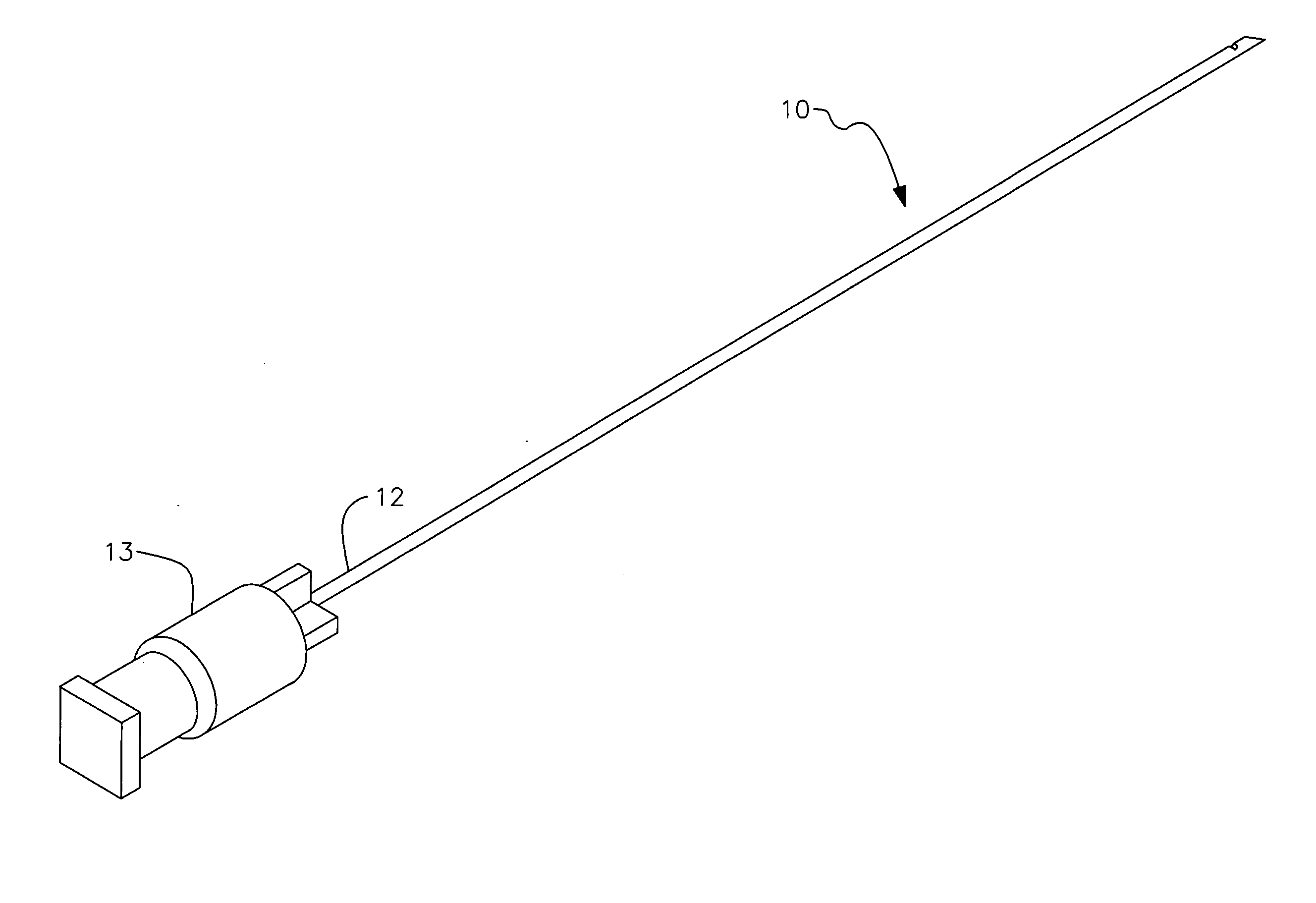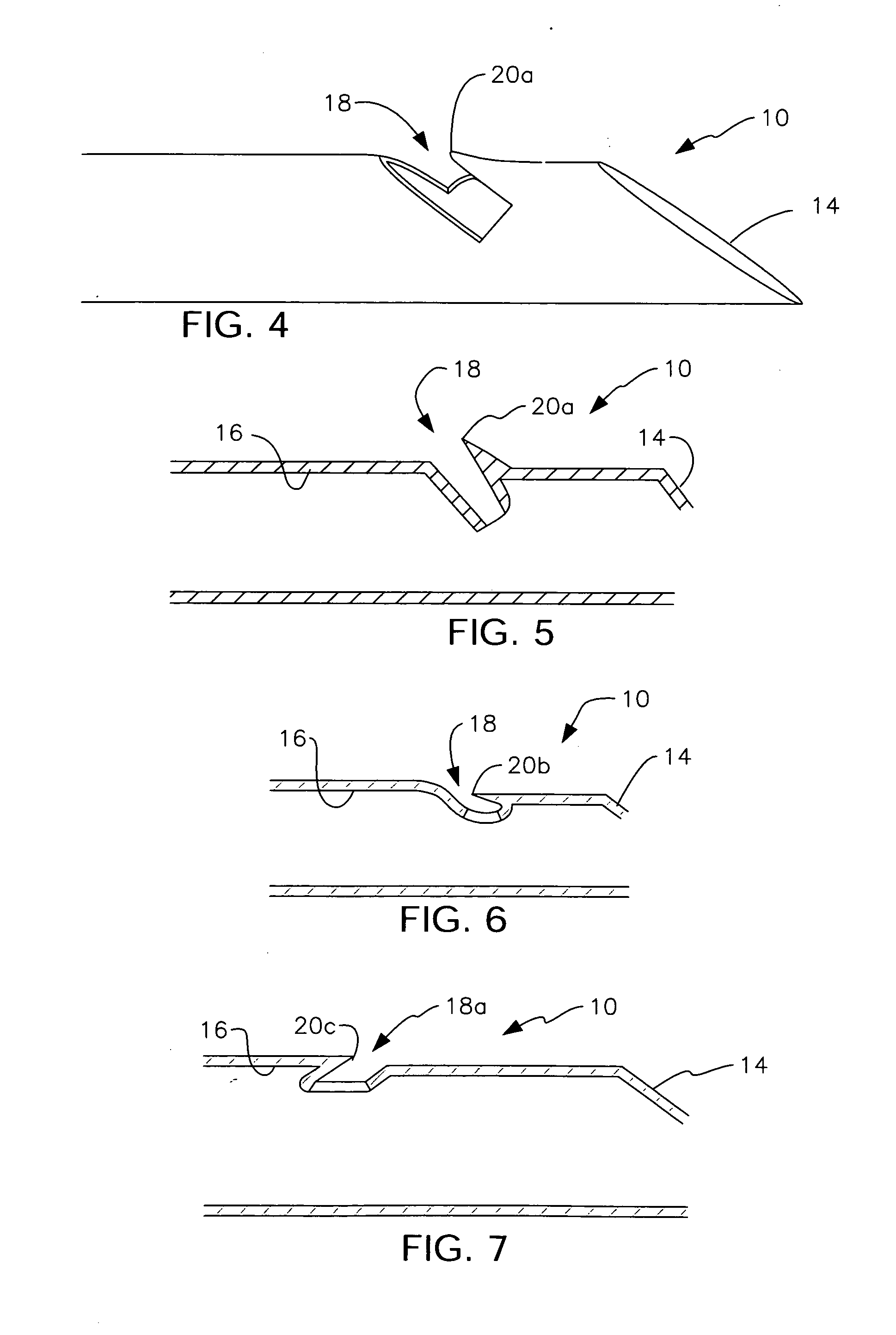Dual Action Aspiration Biopsy Needle
a biopsy needle and needle body technology, applied in the field of aspiration biopsy needles, can solve the problems of inability to immediately examine under microscope, high cost, and inability to perform a biopsy, and achieve the effect of improving the ability to collect cellular materials
- Summary
- Abstract
- Description
- Claims
- Application Information
AI Technical Summary
Benefits of technology
Problems solved by technology
Method used
Image
Examples
first embodiment
[0062] As perhaps best depicted in FIG. 3, second sharp edge 20 is coincident or flush with the exterior surface of needle 10 in this
[0063]FIG. 4 provides a perspective view of a second embodiment of needle 10 where second sharp edge 20a is elevated with respect to the exterior surface of needle 10 and FIG. 5 provides a longitudinal sectional view of said second embodiment. The protrusion of second sharp edge 20a above the exterior surface of the needle ensures that the cellular material collected when using this second embodiment should be greater than the amount of cellular material collected when using the first embodiment.
third embodiment
[0064]FIG. 6 provides a longitudinal sectional view of a third embodiment where second sharp edge 20b is recessed with respect to said exterior surface. The lesion, not shown, is under compression as needle 10 penetrates it. Accordingly, an amount of tissue will enter into slot 18 and be scraped off during distal-to-proximal travel of needle 10, even though sharp edge 20b is recessed with respect to the exterior surface of the needle.
[0065]FIG. 7 depicts a fourth embodiment where a slot 18a is formed transversely to the longitudinal axis of needle 10 as in the first embodiment, but the axis of symmetry of slot 18a is normal to the axis of symmetry of slot 18. In other words, the bottom of slot 18a is proximal to the open upper end of slot 18a. Accordingly, a third sharp edge, denoted 20c, is formed. Third sharp edge 20c is auxiliary to first sharp edge 14 in that said third sharp edge scrapes cellular material from a lesion during proximal-to-distal travel of needle 10.
[0066]FIGS. ...
PUM
 Login to View More
Login to View More Abstract
Description
Claims
Application Information
 Login to View More
Login to View More - R&D
- Intellectual Property
- Life Sciences
- Materials
- Tech Scout
- Unparalleled Data Quality
- Higher Quality Content
- 60% Fewer Hallucinations
Browse by: Latest US Patents, China's latest patents, Technical Efficacy Thesaurus, Application Domain, Technology Topic, Popular Technical Reports.
© 2025 PatSnap. All rights reserved.Legal|Privacy policy|Modern Slavery Act Transparency Statement|Sitemap|About US| Contact US: help@patsnap.com



